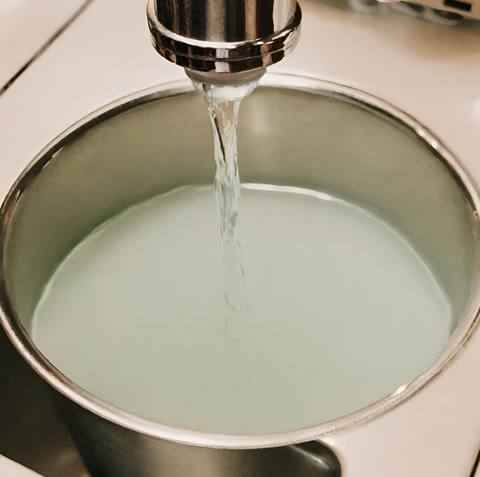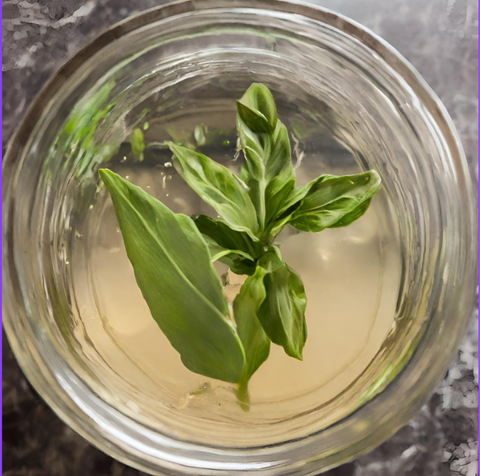This post will discuss how to clean aquarium decorations with tools and solutions like bleach, vinegar, hydrogen peroxide, and boiling water. We will also cover what precautions you should take while doing so. Keep reading to ensure the well-being of both your fish and your aquarium's aesthetics!
Aquarium Cleaning Tools
- Gravel vacuum / siphon hose - used at the end of cleaning to get ride of debris
- Algae scraper / credit card / razor blade - cleans the glass or stuck on debris *only use razor blades on glass*
- Aquarium scrubbing pad - clean decor and glass
- Fish net - remove large chunks of debris
- Bucket - for the siphon
- Soft Brush / toothbrush - reach small crevices and clean decor from algae
- Forceps / tweezers - for maneuvering in tight spots and hard to reach areas
These should be your go-to tools for cleaning your aquarium and aquarium decor. If these aren't effective then we can move on to the different solutions you can use to clean your aquarium decor.
Which aquarium ornament cleaner is best?
A vinegar solution is safe and effective for removing stains and hard water deposits. Boiling plastic decorations can help sterilize them, hydrogen peroxide can be used to kill algae and bleach is for the treatment of harsh stuck on grim. Always important to take precautions when using chemical methods to clean your aquarium decorations.
Expert Tip1 : Seachem Flourish Excel is an effective algae remover however see manufacture instructions for use https://www.seachem.com/flourish-excel.php
Hot water to clean plastic decorations

Here are some tips to help ensure safe use of hot water on plastic aquarium decorations:
- Use a pot or container that is large enough to accommodate the decorations without overcrowding them. Overcrowding may cause the decorations to warp or become misshapen.
- Fill the pot or container with hot tap water, enough water to completely cover the decorations. This will help ensure that the decorations are thoroughly cleaned and sanitized.
- Allow the decorations to sit in the hot water for 10-15 minutes. This should be enough time to thoroughly sanitize them and remove any buildup.
- Use tongs or a heat-resistant glove to remove the decorations from the pot or container. Be careful not to touch the decorations directly, as they may be very hot.
- Rinse the decorations thoroughly with cool water to remove any residual debris and scrub with a soft brush.
One thing to keep in mind is the decoration may warp due to heat which is why it's important to use hot tap water not boiling hot water.
Cleaning Aquarium Decorations with Bleach
Cleaning aquarium decorations with bleach is our least recommended method because it is such a harsh chemical and its easy to mix up pure bleach with other bleach-based cleaning products which can leave behind toxic chemicals. Bleach can also discolour your silk aquarium decorations so don't use bleach to clean silk aquarium decorations.
If you have very stubborn dirt and grime on your aquarium decoration and want to use this method, we recommend creating a diluted bleach solution using 1 part bleach to 9 parts water.
Soak the decorations in the solution for 10-30 minutes, then rinse thoroughly with fresh water to remove any residual bleach. It is crucial to allow the decorations to air dry completely before returning them to the aquarium.
Remember, never let bleach come into contact with any of your aquarium inhabitants or your skin so make sure to wear gloves!
Soak in vinegar solution

Vinegar It is a natural and non-toxic cleaner that is especially effective at removing calcium buildup. To effectively clean aquarium decorations, soaking them in a vinegar solution is a great option.
By mixing one part vinegar with three parts water, you can create a powerful cleaning solution. Simply place the decorations in the solution and let them soak for 15-20 minutes.
This will help remove stubborn stains and mineral deposits. After soaking, make sure to rinse the decorations thoroughly with fresh water before returning them to the fish tank.
It's worth noting even though Vinegar is a natural cleaning agent if the decorations are not rinsed properly and there is still a significant amount of vinegar on the decorations this can cause a bacteria bloom which will cause the aquarium to go cloudy.
If this happens take precautions to do daily water changes, add an air stone and add as much surface agitation as possible. A bacteria bloom can reduce the available oxygen levels in the tank so it's important to significantly increase the available oxygen in the tank with these methods in case of a bacteria bloom.
This won't happen unless the decorations aren't rinsed before being placed back in the tank, however.
Expert Tip 1: Using vinegar undiluted is also safe for stuck-on grime just make sure to rinse well!
Expert Tip 2: If pure vinegar is still not strong enough try buying citric acid. sounds scary, it's an acid, but it's just vitamin C, but u it comes in powder form so it can be much stronger. Just add water till it dissolves and make sure to rinse well just like with pure vinegar.
Use hydrogen peroxide

When it comes to cleaning aquarium decorations, hydrogen peroxide can be a valuable tool. This is our favourite method because is very safe and very effective at killing algae on aquarium decorations. If you have any algae eaters such as plecos or Otocinclus Catfish they will happily eat the algae right off the decoration after this type of treatment.
To use hydrogen peroxide effectively, dilute it with water using a ratio of 1 part hydrogen peroxide to 3 parts water. Then, submerge the decorations in the diluted hydrogen peroxide solution overnight. After soaking, rinse the decorations thoroughly in fresh water and return them to your aquarium.
Hydrogen peroxide (H202) breaks down into water (H2O) overnight so the risk of any chemical contaminants or damage to your aquatic life is minimal. H2O2 is even occasionally dosed directly into aquariums to kill algae however this will not be covered in this article so do your own diligence if you want to attempt this.
All these properties of hydrogen peroxide make it an excellent choice for removing stubborn stains and algae growth without harming your fish or the aquarium environment.
Expert Tip 3: Its also safe just to use hydrogen peroxide undiluted just make sure to leave it open overnight and rise well.
Expert Tip 4: Hydrogen peroxide is commonly available at 3 and 5% both work well. Don't purchase lab-grade stuff though!
Frequently Asked Questions
How often should I clean my aquarium decorations?
You should clean your aquarium decorations whenever they are covered in dirt or algae. It's important to know cleaning your aquarium decorations and cleaning your aquarium are 2 separate things and water changes should be performed at least bi-weekly.
What are some potential risks or dangers associated with dirty aquarium decor?
Dirty aquarium decorations usually just don’t look nice and, in most cases, dirty aquarium decorations have algae on them. Algae, just like a plant removes toxic waste build-up and doesn't pose a threat to your aquarium. if you consistently have lots of algae build-up however it might be a sign of overfeeding, not enough water changes or too much light in your aquarium.
Are there any specific products or tools that should be avoided when cleaning aquarium decorations?
To ensure the safety of your aquarium and its inhabitants, avoid using soap and be very cautious when using bleach. The first choice should be for a soft brush or sponge and chemical treatments like vinegar or hydrogen peroxide for harsher stuff.
Can a buildup of algae on decorations harm my fish?
No. Algae, similar to plants, effectively eliminate accumulated toxic waste in your aquarium and generally do not present a threat. However, if you frequently observe excessive algae growth, it could indicate overfeeding, inadequate water changes, or excessive lighting in your aquarium.
Can dirty aquarium decorations have negative effects on fish health?
No, unclean aquarium decorations typically appear unsightly, often featuring algae growth but does not have negative effects on your fish health. It's crucial to understand that the cleanliness of aquarium decorations and the overall aquarium hygiene are 2 different matters, and regular water changes should be conducted at least every two weeks.
Conclusion
Regular cleaning of aquarium decorations is crucial for maintaining a healthy and thriving aquatic environment and improving the overall aesthetics of your aquarium. By using the right cleaning tools and techniques, such as scrubbing, soaking in vinegar solution, hot water, or hydrogen peroxide, you can ensure that your fish have a safe and clean habitat. Remember to always take necessary precautions and handle cleaning agents with care.
Have you used any of these cleaning methods before? Feel free to let others know how it went with a comment down bellow!


1 comment
Excellent article. Thank you